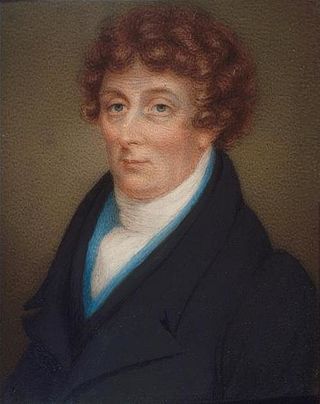Related Research Articles
The Canadian order of precedence is a nominal and symbolic hierarchy of important positions within the governing institutions of Canada. It has no legal standing, but is used to dictate ceremonial protocol.

Guy Carleton, 1st Baron Dorchester, known between 1776 and 1786 as Sir Guy Carleton, was a British Army officer, peer and colonial administrator. He twice served as Governor of the Province of Quebec, from 1768 to 1778, concurrently serving as Governor General of British North America in that time, and again from 1785 to 1795. The title Baron Dorchester was created on 21 August 1786.

Events from the year 1758 in Canada.

Events from the year 1759 in Canada.

Events from the year 1760 in Canada.

Events from the year 1762 in Canada.

Events from the year 1764 in Canada.

Events from the year 1766 in Canada.

Events from the year 1768 in Canada.

Events from the year 1770 in Canada.

Events from the year 1773 in Canada.

Events from the year 1774 in Canada.

Events from the year 1786 in Canada.

Events from the year 1787 in Canada.

Lieutenant-General Robert Monckton was an officer of the British Army and colonial administrator in British North America. He had a distinguished military and political career, being second in command to General James Wolfe at the battle of Quebec and later being named the Governor of the Province of New York. Monckton is also remembered for his role in a number of other important events in the French and Indian War, most notably the capture of Fort Beauséjour in Acadia, and the island of Martinique in the West Indies, as well as for his role in the deportation of the Acadians from British controlled Nova Scotia and also from French-controlled Acadia. The city of Moncton, New Brunswick, and Fort Monckton in Port Elgin, New Brunswick, are named for him. A second more important Fort Monckton in Gosport, England, is also named for him. It remains an active military establishment, and currently houses the British Secret Intelligence Service (MI6) training section. Monckton sat in the British House of Commons between 1774 and 1782. Although never legally married, he raised and was survived by three sons and a daughter.
The General Assembly of Nova Scotia was established by a proclamation of the Governor in Council on May 20, 1758. A writ for the election of the 1st General Assembly of Nova Scotia was issued by May 22, returnable at the convening of the assembly on October 2, 1758. The assembly held two sessions, and was dissolved on August 13, 1759.

Sir James Monk was Chief Justice of Lower Canada. Monk played a significant role in the abolition of slavery in British North America, when as Chief Justice he rendered a series of decisions regarding escaped slaves that 'while not technically abolishing slavery rendered it innocuous'. 'The slave could not be compelled to serve longer than he would, and ... might leave his master at will.'
Archibald Hinshelwood was a lawyer, merchant and political figure in Nova Scotia. He briefly sat on the 1st General Assembly of Nova Scotia in April 1759, but his election was disputed. He was a member of subsequent assemblies from 1759 to 1773, representing Lunenburg County from 1761 to 1765 and from 1770 to 1773, and Lunenburg Township from 1765 to 1770. His name also appears as Hinchelwood.

Thomas Cochran or Cochrane was an Irish-born merchant and political figure in Nova Scotia. He represented Liverpool Township in the Nova Scotia House of Assembly from 1775 to 1785.

Formally known as "His Majesty's Council of Nova Scotia", the Nova Scotia Council (1720–1838) was the original British administrative, legislative and judicial body in Nova Scotia. The Nova Scotia Council was also known as the Annapolis Council and the Halifax Council. After 1749, when the judicial courts were established, the Nova Scotia Council was limited to administrative and legislative powers.
References
- L’heureux, Jacques (1979). "George Suckling". Dictionary of Canadian Biography Online . Retrieved 20 December 2008..